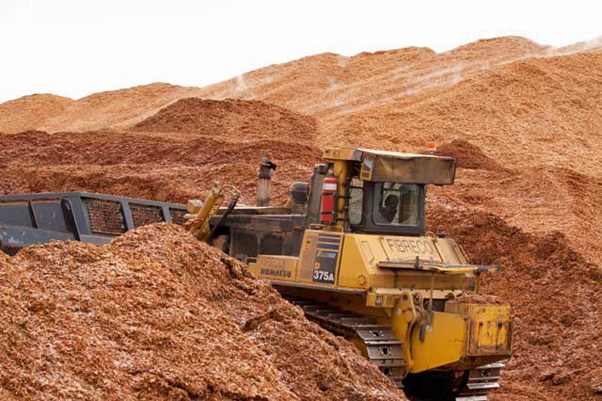Record Operating Rates at Quebec, Ontario Sawmills Produce Excess Chip Residuals
![]() Print this Article | Send to Colleague
Print this Article | Send to Colleague
Sawmills in Eastern Canada ran at record high levels in 2016, with production reaching levels almost 10% higher than in 2015 and almost 40% higher than five years ago. This has been very good news to the forest industry, with sawmills running at 97% operating rates in late 2016, according to the WWPA (Western Wood Products Association). However, there are also worrisome developments regarding the large volumes of residual chips that are being generated and where the chips can be sold, the North American Wood Fiber Review (NAWFR), Seattle, Wash., USA, reports.
The pulp sector has been the key consumer of residuals in the past, but with a shrinking pulp industry in both Ontario and Quebec, there are concerns that sawmills in the region might be forced to limit production levels because it may be difficult to sell off the large volumes of chips that are being produced, according to NAWFR.

Despite the oversupply of residues in Quebec, wood chip prices have not changed much during the past few years in Canadian dollar terms. Most contract prices for residues are set on an annual basis and after four years of practically unchanged prices, they fell almost 5% in the 1Q/17. It is likely that prices will decline in the future, but this will not necessarily solve the problem with access to chips in the province. Either new production capacity needs to be added (e.g. wood pulp, pellets, composite panels, or bio-based products), or sawmills will have to find other outlets for their chips outside of the province. Alternatively, sawmills might have to reduce production levels in the future, NAWFR notes.
Although the latter alternative would be less desirable for both the domestic forest industry and for lumber consumers in the U.S., to which much of the lumber is exported, it could still be a reality later this year. If the new U.S. softwood lumber import tariff is implemented at such a high rate that it reduces the profitability of the lumber companies in the two provinces, it is likely to result in reduced production levels and thus declining supply of residual chips to find a home for, NAWFR points out.
The North American Wood Fiber Review has tracked wood fiber markets in the U.S. and Canada for more than 30 years and it is the only publication that includes prices for sawlogs, pulpwood, wood chips, pellet feedstock, and biomass in North America. The 36-page quarterly report includes wood market updates for 15 regions on the continent in addition to the latest export statistics for sawlogs, lumber, wood pellets and wood chips.
More information is available online.


